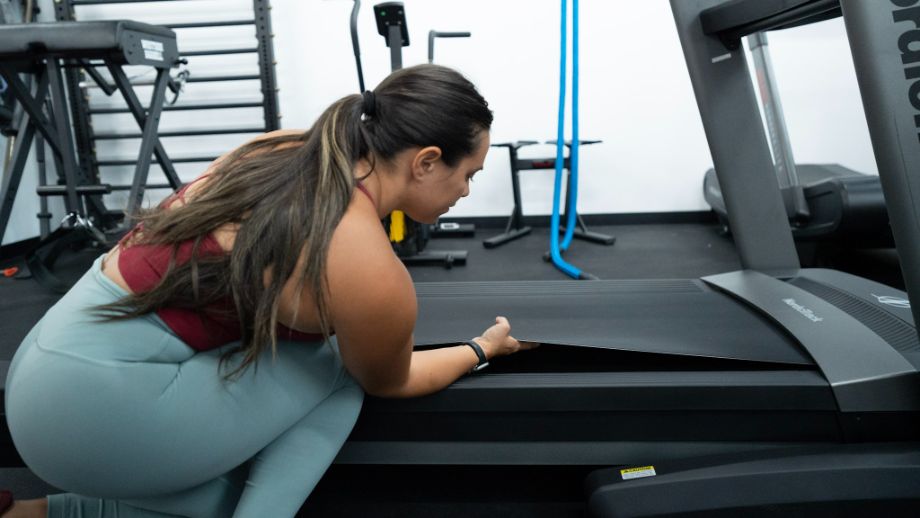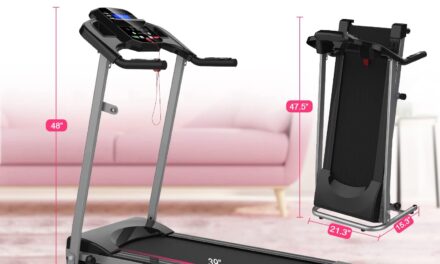Have you ever wondered how tight your treadmill belt should be? Whether you’re a seasoned runner or just starting out on your fitness journey, the tension of your treadmill belt can greatly affect your workout experience. Finding the perfect balance between too loose and too tight is essential for both safety and optimal performance. In this article, we will explore the factors to consider when determining the ideal tightness of your treadmill belt, providing you with the guidance you need to achieve a comfortable and effective workout. Get ready to step up your treadmill game and maximize your fitness gains!
Proper Treadmill Belt Tension
Importance of Treadmill Belt Tension
When it comes to using a treadmill, one important aspect that often gets overlooked is the proper tension of the belt. The belt tension plays a crucial role in the performance and longevity of your treadmill. If the belt tension is incorrect, it can affect your workout experience, lead to unnecessary wear and tear, and even pose safety hazards. Therefore, understanding and maintaining the proper treadmill belt tension is essential for optimal performance and safety.
Effect of Incorrect Tension on Treadmill Performance
Incorrect belt tension can have several negative effects on the performance of your treadmill. Firstly, if the belt is too loose, it may slip during use, causing you to lose your balance and potentially injure yourself. Additionally, a loose belt can reduce the efficiency of your workout, making it more challenging to achieve your fitness goals. On the other hand, an overly tight belt can lead to excessive strain on the motor and other components, resulting in increased noise, vibration, and uneven belt tracking. This can not only disrupt your workout but also potentially damage the treadmill.
Determining the Right Treadmill Belt Tension
Several factors influence the optimal belt tension for your treadmill. Understanding these factors will help you determine the right tension for your specific treadmill model and usage requirements.
Treadmill Type and Model
Different treadmill types and models may have varying belt tension recommendations. It is important to refer to the manufacturer’s guidelines or user manual for the specific tension requirements of your treadmill. This information will ensure that you set the belt tension within the recommended range.
Belt Material and Condition
The material and condition of the treadmill belt also play a role in determining the appropriate tension. Older or worn-out belts may require slightly different tension compared to new belts. It is crucial to regularly inspect and maintain the belt’s condition to ensure optimal performance and safety.
User Weight and Intended Usage
Your body weight and intended usage of the treadmill are important factors to consider when adjusting the belt tension. Heavier users or those who engage in intense workouts may require a slightly tighter belt tension to accommodate the additional strain.
Adjusting Treadmill Belt Tension
User Manual Instructions
The user manual provided by the treadmill manufacturer is an excellent resource for understanding how to adjust the belt tension. It typically includes detailed instructions specific to your treadmill model. Following these instructions carefully will help you achieve the proper tension.
Using a Tension Gauge
For more precise belt tension adjustment, you can use a tension gauge. A tension gauge is a specialized tool that measures the tension of the treadmill belt. By following the manufacturer’s guidelines and using a tension gauge, you can ensure accurate and consistent belt tension.
Tips for Proper Treadmill Belt Adjustment
Here are some general tips to keep in mind when adjusting the belt tension:
- Start with the power off: Before making any adjustments, ensure that the treadmill is completely turned off and unplugged. This will minimize the risk of injury and avoid accidental damage to the machine.
- Check the belt position: Make sure the belt is centered on the treadmill deck. It should not be skewed to one side or the other. Proper alignment ensures even wear and reduces strain on the motor.
- Gradual adjustments: When tightening or loosening the belt, make small and gradual adjustments. This allows you to fine-tune the tension without overdoing it or causing sudden changes that can adversely impact the treadmill’s performance.
- Test the belt tension: After making any adjustments, test the belt tension by walking or jogging at a slow speed. Pay attention to any slipping, unusual noise, or uneven wear. If any issues persist, further adjustments may be necessary.
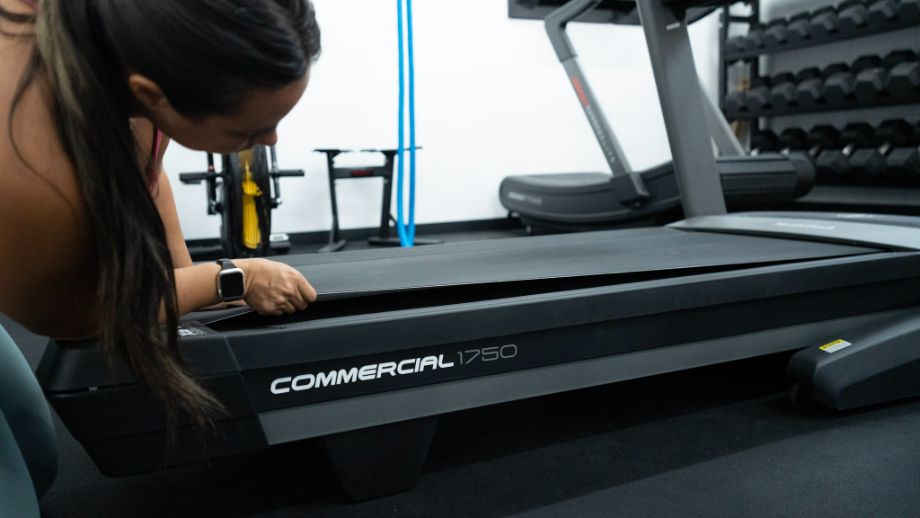
Signs of Incorrect Belt Tension
Slipping Belt
One of the most common signs of incorrect belt tension is a slipping belt. If you notice that the belt slips or slides when you step on it, it indicates that the tension is too loose. This can interfere with your workout and increase the risk of accidents or injuries.
Excessive or Uneven Wear
An incorrectly tensioned belt can lead to excessive or uneven wear. Look out for signs of excessive fraying, wearing, or thinning of the belt. Uneven wear patterns, such as concentrated wear on specific areas, can also indicate improper belt tension.
Unusual Noise
Noisy operation, such as squeaking, scraping, or grinding sounds, can be a direct result of incorrect belt tension. The noise is typically caused by the belt rubbing against the treadmill deck or other components. If you notice any unusual noise during your workout, it may be an indication of improper belt tension.
Effects of Loose Treadmill Belt
Reduced Performance and Efficiency
A loose treadmill belt can significantly impact the performance and efficiency of your workout. It can make running or walking on the treadmill more strenuous, as you may need to exert additional effort to maintain your pace. This can lead to decreased workout effectiveness and hinder your progress towards your fitness goals.
Safety Hazards
One of the most critical aspects of treadmill safety is ensuring the proper tension of the belt. A loose belt can cause you to lose your balance, slip, or trip while using the treadmill. This can result in serious injuries such as sprains, strains, or falls. Therefore, maintaining the correct belt tension is crucial for your safety during treadmill workouts.
Accelerated Belt Wear
A loose belt causes excessive movement and friction between the belt and treadmill deck. This additional stress can accelerate the wear and tear of the belt, leading to a shortened lifespan. Regularly replacing and adjusting loose belts can be costly and time-consuming.
Effects of Overly Tight Treadmill Belt
Increased Strain on Motor and Components
Just as a loose belt has negative consequences, an overly tight belt can also be detrimental to your treadmill. Excessive tension places strain on the motor and other vital components of the treadmill. This can result in premature wear and potential damage to the motor, reducing the overall lifespan of your treadmill.
Excessive Noise and Vibration
If your belt is overly tight, you may experience increased noise and vibration during your workout. The excessive tension causes the belt to rub against the deck or other components, leading to a noisy and less enjoyable exercise session. The vibrations can also be uncomfortable and affect your overall workout experience.
Uneven Belt Tracking
An overly tight belt can cause uneven tracking, where the belt may veer to one side or move off-center during use. This can lead to an imbalanced and unstable workout, increasing the likelihood of accidents or injuries. Proper belt tension ensures that the belt remains centered, allowing for a smooth and safe workout session.
Common Mistakes in Belt Tension Adjustment
Over-Tightening the Belt
Over-tightening is a common mistake when adjusting the treadmill belt tension. It may be tempting to tighten the belt excessively to avoid slipping or other issues. However, this can place unnecessary strain on the motor and components, leading to increased wear and premature damage.
Under-Tightening the Belt
Conversely, under-tightening the belt can also cause problems. A loose belt not only affects the efficiency of your workout but also poses safety hazards. It is essential to find the right balance and adjust the tension within the manufacturer’s recommended range.
Neglecting Regular Inspection and Adjustment
Many treadmill owners neglect to regularly inspect and adjust the belt tension. Over time, the tension can change due to normal wear and tear or other factors. Regular maintenance and inspection allow you to catch any issues early on and make the necessary adjustments to ensure optimal performance and longevity.
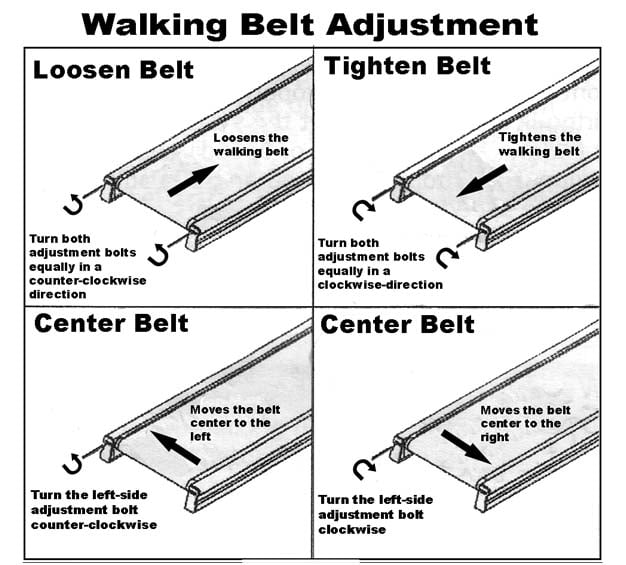
Maintaining Proper Belt Tension
Regular Inspection and Lubrication
To maintain proper belt tension, it is crucial to perform regular inspections and lubrication. Check the belt for signs of wear, fraying, or uneven tension. Lubricate the treadmill deck according to the manufacturer’s guidelines to reduce friction and ensure smooth belt movement.
Monitoring Belt Tracking
Belt tracking refers to the alignment of the treadmill belt. Regularly monitor the belt tracking to ensure that it remains centered and does not veer to one side. If you notice any misalignment, make the necessary adjustments to keep the belt properly aligned.
Proper Cleaning and Maintenance
Keep your treadmill clean and free from dirt, dust, and debris. Regularly wipe down the belt and deck to prevent the accumulation of particles that can affect belt tension. Proper cleaning and maintenance help maintain the longevity and performance of your treadmill.
Frequency of Belt Tension Adjustment
Manufacturer’s Recommendations
The manufacturer of your treadmill will typically provide recommendations for how frequently you should adjust the belt tension. Follow their guidelines to ensure optimal performance and safety. Different treadmill models may have varying maintenance requirements, so it is essential to refer to the specific guidelines for your treadmill.
Intended Usage Frequency
If you use your treadmill frequently or engage in intense workouts, you may need to adjust the belt tension more frequently. Regular usage can lead to changes in belt tension over time. Pay attention to any signs of wear or slipping, and make the necessary adjustments as needed.
User Weight Variations
The weight of the user can also influence the frequency of belt tension adjustment. Heavier users or those close to the weight capacity of the treadmill may need to monitor and adjust the tension more frequently. The additional strain placed on the belt may require more frequent maintenance to ensure optimal performance and safety.
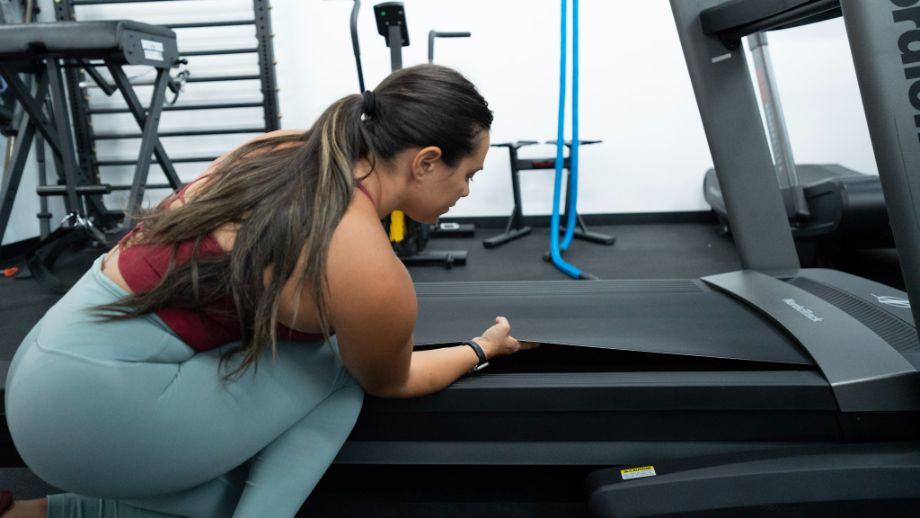
Seeking Professional Help
When to Consult a Technician
If you are unsure about adjusting the belt tension yourself or if you encounter persistent issues, it may be best to consult a qualified technician. A professional can assess the condition of your treadmill, make the necessary adjustments, and provide expert recommendations to ensure optimal performance and safety.
Benefits of Professional Service
Professional treadmill service offers several benefits. Technicians have the knowledge and experience to accurately assess and adjust the belt tension. They can also identify any underlying issues or potential problems that may affect the performance of your treadmill. Professional service can save you time, reduce the risk of damaging your equipment, and provide peace of mind.
Preventive Maintenance Programs
Consider enrolling in a preventive maintenance program for your treadmill. These programs typically include regular maintenance, inspection, and adjustments performed by qualified technicians. Preventive maintenance ensures that your treadmill is properly maintained, helping to prevent issues before they arise and extending the lifespan of your equipment.
In conclusion, maintaining the proper tension of your treadmill belt is vital for optimal performance, safety, and longevity. Understanding the influence of factors such as treadmill type, belt material, user weight, and intended usage is crucial in determining the appropriate tension. By following the manufacturer’s guidelines, using a tension gauge when necessary, and being mindful of the signs of incorrect tension, you can adjust the belt tension to ensure a smooth and safe workout experience. Regular inspection, lubrication, and maintenance will help maintain the proper tension, reducing the risk of injury, extending the lifespan of your treadmill, and maximizing your fitness goals.

